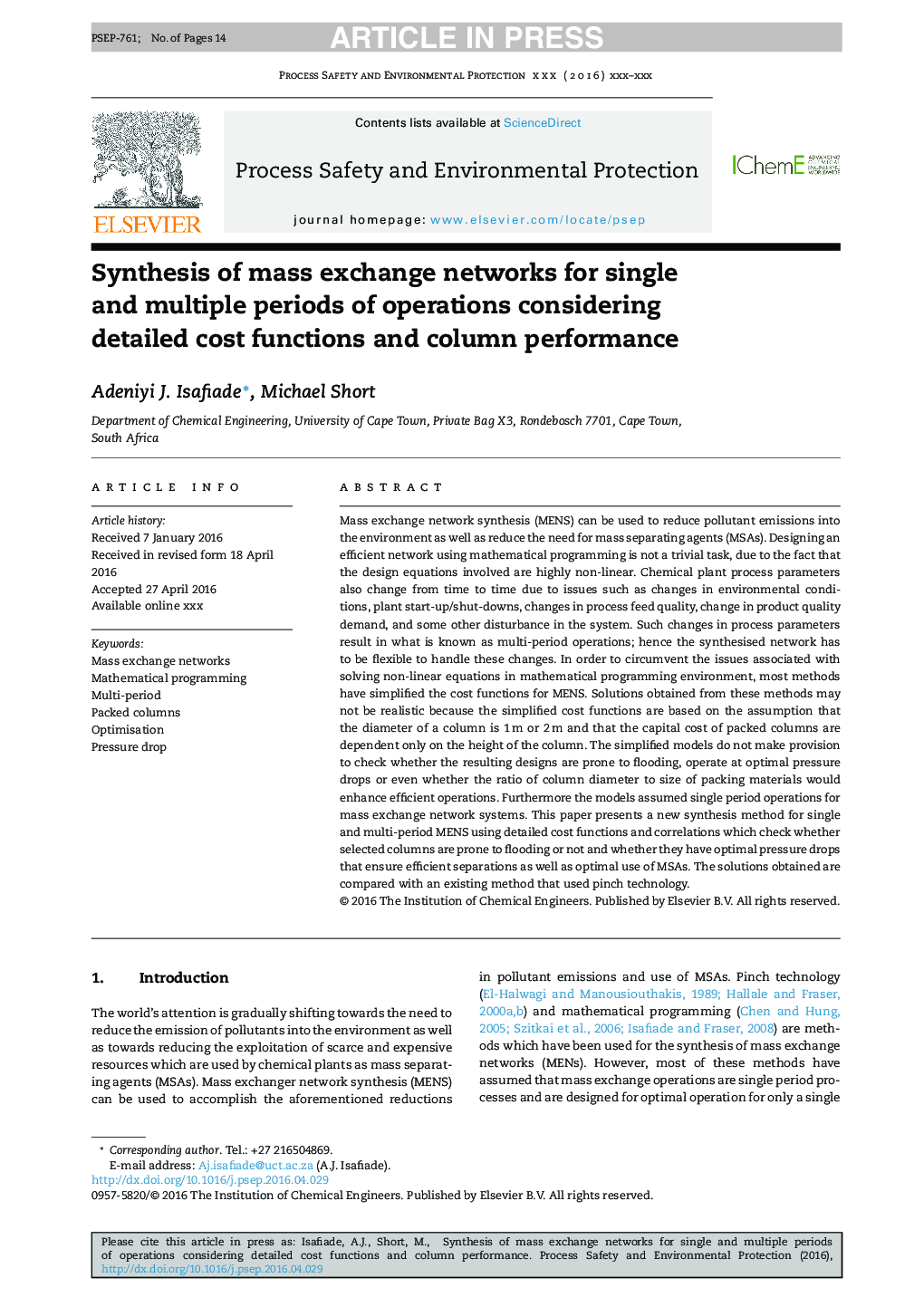| Article ID | Journal | Published Year | Pages | File Type |
|---|---|---|---|---|
| 4980778 | Process Safety and Environmental Protection | 2016 | 14 Pages |
Abstract
Mass exchange network synthesis (MENS) can be used to reduce pollutant emissions into the environment as well as reduce the need for mass separating agents (MSAs). Designing an efficient network using mathematical programming is not a trivial task, due to the fact that the design equations involved are highly non-linear. Chemical plant process parameters also change from time to time due to issues such as changes in environmental conditions, plant start-up/shut-downs, changes in process feed quality, change in product quality demand, and some other disturbance in the system. Such changes in process parameters result in what is known as multi-period operations; hence the synthesised network has to be flexible to handle these changes. In order to circumvent the issues associated with solving non-linear equations in mathematical programming environment, most methods have simplified the cost functions for MENS. Solutions obtained from these methods may not be realistic because the simplified cost functions are based on the assumption that the diameter of a column is 1Â m or 2Â m and that the capital cost of packed columns are dependent only on the height of the column. The simplified models do not make provision to check whether the resulting designs are prone to flooding, operate at optimal pressure drops or even whether the ratio of column diameter to size of packing materials would enhance efficient operations. Furthermore the models assumed single period operations for mass exchange network systems. This paper presents a new synthesis method for single and multi-period MENS using detailed cost functions and correlations which check whether selected columns are prone to flooding or not and whether they have optimal pressure drops that ensure efficient separations as well as optimal use of MSAs. The solutions obtained are compared with an existing method that used pinch technology.
Keywords
Related Topics
Physical Sciences and Engineering
Chemical Engineering
Chemical Health and Safety
Authors
Adeniyi J. Isafiade, Michael Short,
